Who Sits Closest to the Bride and Groom? Understanding Wedding Seating Etiquette
When planning your wedding seating chart, consider the prominence of the seats closest to you. These esteemed spots are traditionally reserved for the most important guests in your life, reflecting their roles and your relationship with them. At most wedding receptions, the individuals seated nearest to the bride and groom are typically key members of the wedding party, which may include the best man, maid of honor, bridesmaids, groomsmen, and close family members.
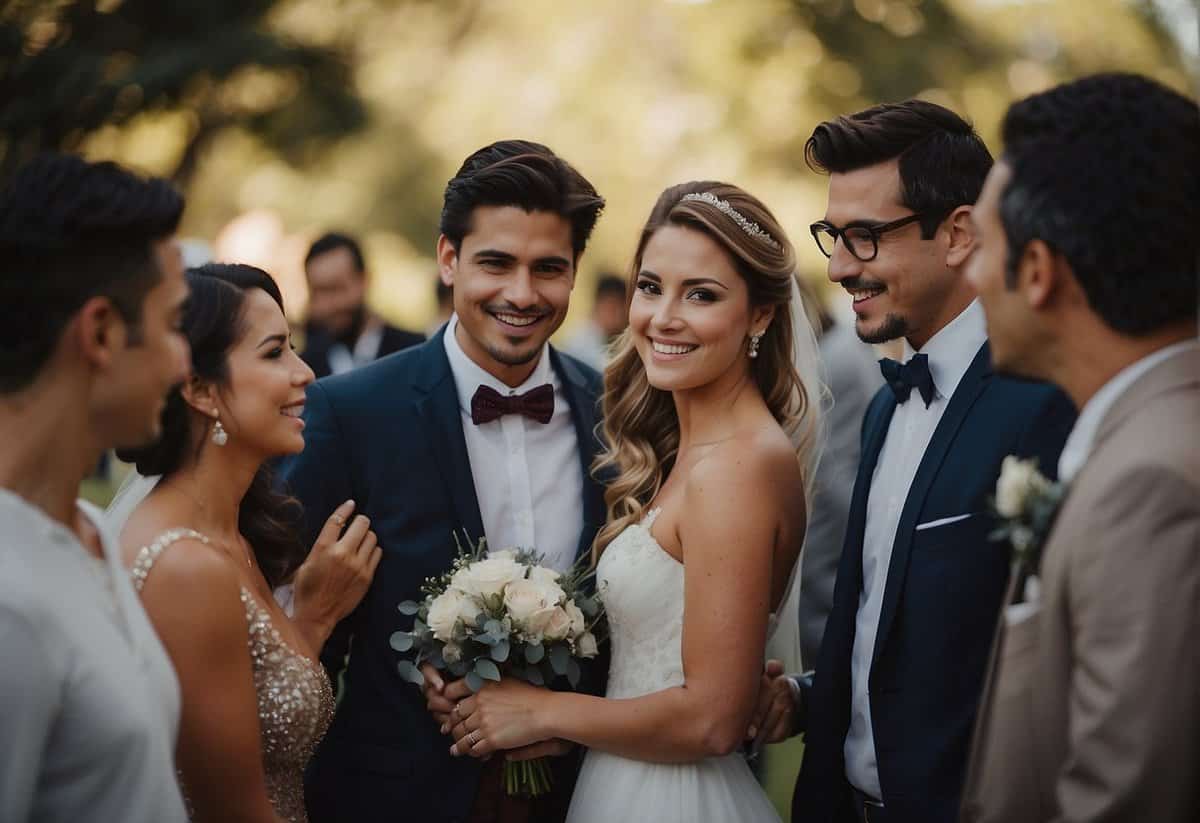
Understanding the classic seating arrangements can help you maintain the expected social protocol while also adding a personal touch to your wedding reception. While the bride is traditionally seated to the groom’s left, with the best man by her side, and the maid of honor to the groom’s right, some couples may choose to mix up these positions to better suit their unique preferences or family dynamics.
Key Takeaways
- Identifying the seats closest to the couple is a crucial step in wedding planning.
- The traditional wedding seating chart has the best man and maid of honor nearest to the bride and groom.
- Creating a seating plan involves blending time-honored customs with your own personal touch.
Traditional Seating Overview
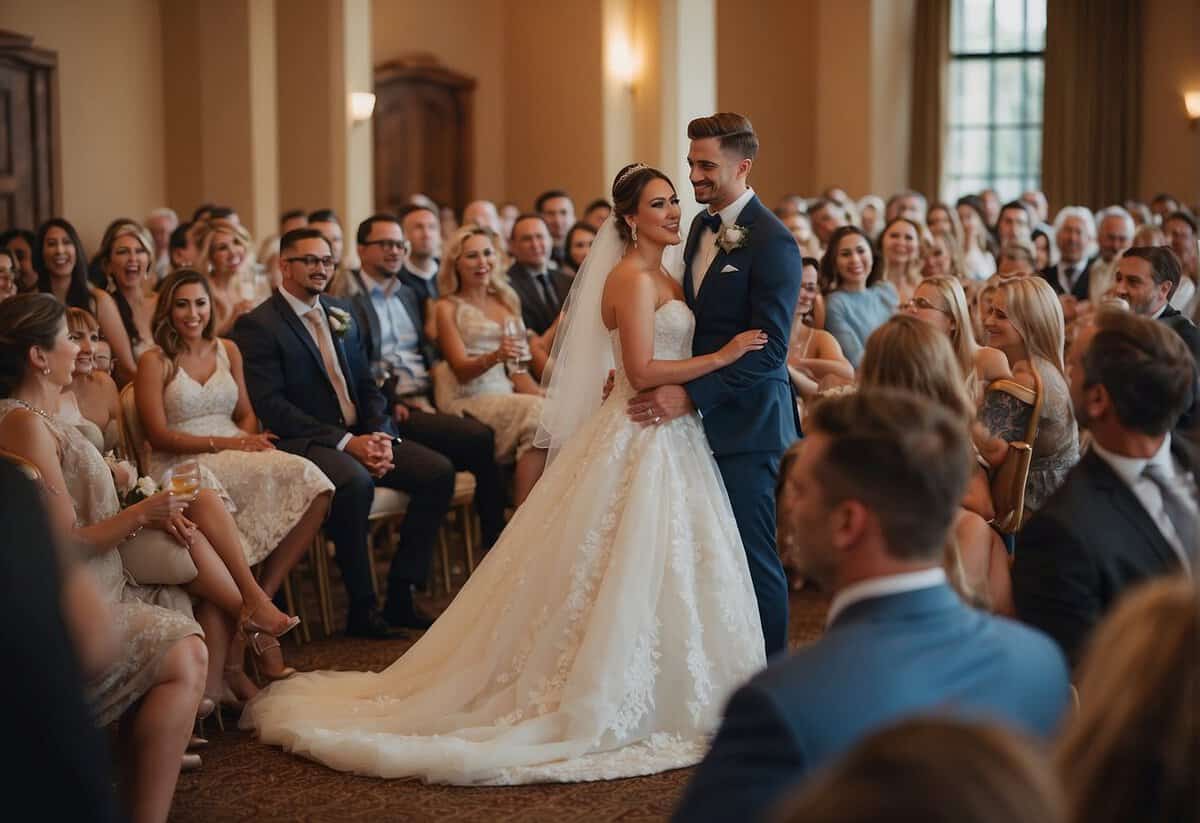
When planning your wedding, understanding who sits where during the reception is vital. Arranging the seating follows a set of traditions that honor both the family and key guests.
Immediate Family Seating
Your parents and grandparents usually sit closest to you and your spouse, reflecting their roles as VIPs in your life. Typically, they’re positioned at the tables nearest to the sweetheart table or head table. It’s common for the parents to host their own tables, where they sit with close relatives and possibly the officiant.
The Head Table
At the head table, tradition places the bride and groom centrally, emphasizing their new partnership. The groom typically sits to the bride’s right. According to The Knot, the best man is seated next to the bride, while the maid of honor sits by the groom’s side. The rest of the bridal party fills out the line, alternating by gender when possible.
VIP Seating Arrangements
VIP guests, including close family friends, godparents, or dignitaries, should be seated just after immediate family members, in acknowledgement of their special status. These guests are usually given prominence by placing them at the next best tables in view of the head table. According to Brides, this honors their connection and importance to you on your special day.
Setting Up the Seating Chart
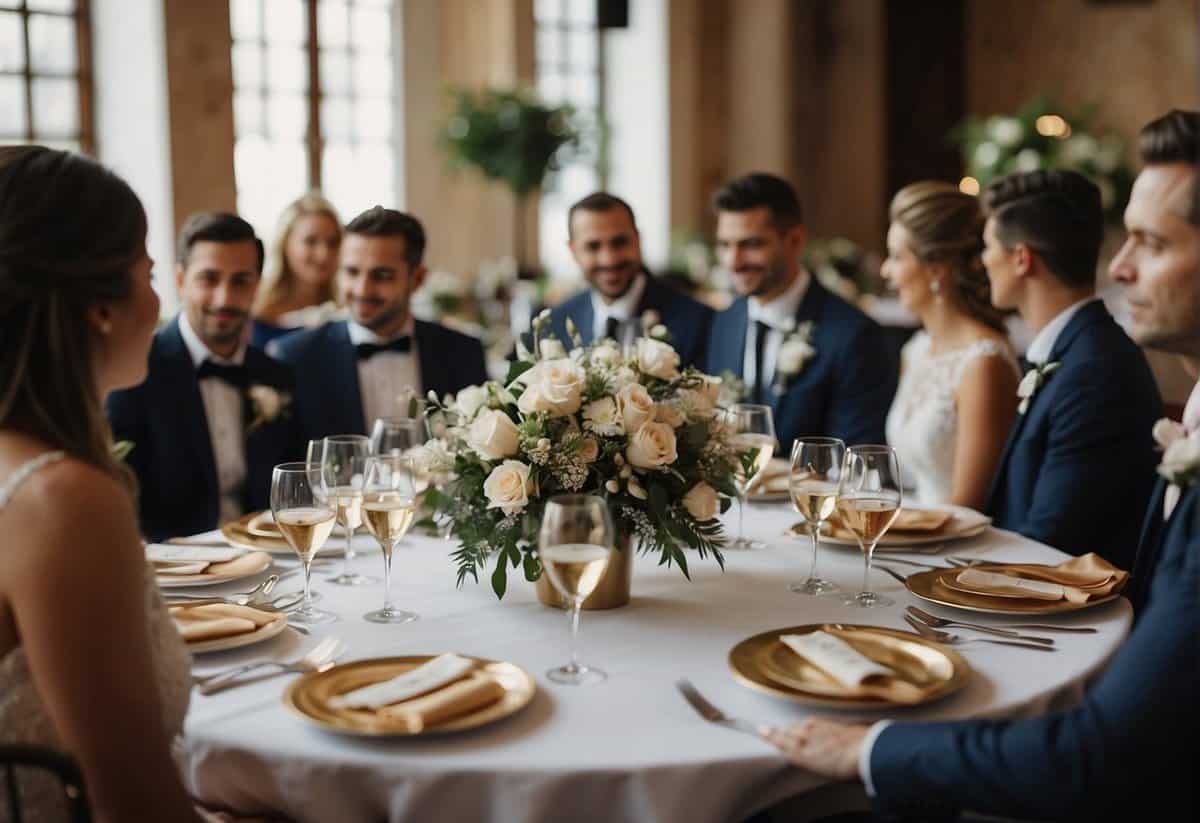
Crafting a seating chart is pivotal in crafting the perfect wedding atmosphere. You’ll balance guest comfort with etiquette, ensuring that each table setting contributes to the joyous occasion.
Guest Accommodations
Your guests’ experience starts with their comfort at the table. Consider RSVPs to gauge the number of attendees and accommodate their needs, whether it’s access for wheelchairs or seating families together. Make note of dietary restrictions and place guests accordingly to ensure the serving process is smooth.
Table Arrangements
The shape of the tables can influence the flow of your wedding. Round tables induce a convivial atmosphere, while long, banquet-style tables offer grandeur and facilitate conversation. Positioning your tables in a way that complements the venue will ensure a harmonious environment for all.
Seating Chart Etiquette
Traditionally, the bride and groom sit at the head table, flanked by the bridal party with the best man to the bride’s left and the maid of honor to the groom’s right, according to The Knot. Your seating chart should reflect a thoughtful process, placing guests in alphabetical order for ease and employing strategic table assignments to blend families and friends for a memorable experience.
Navigating Special Circumstances
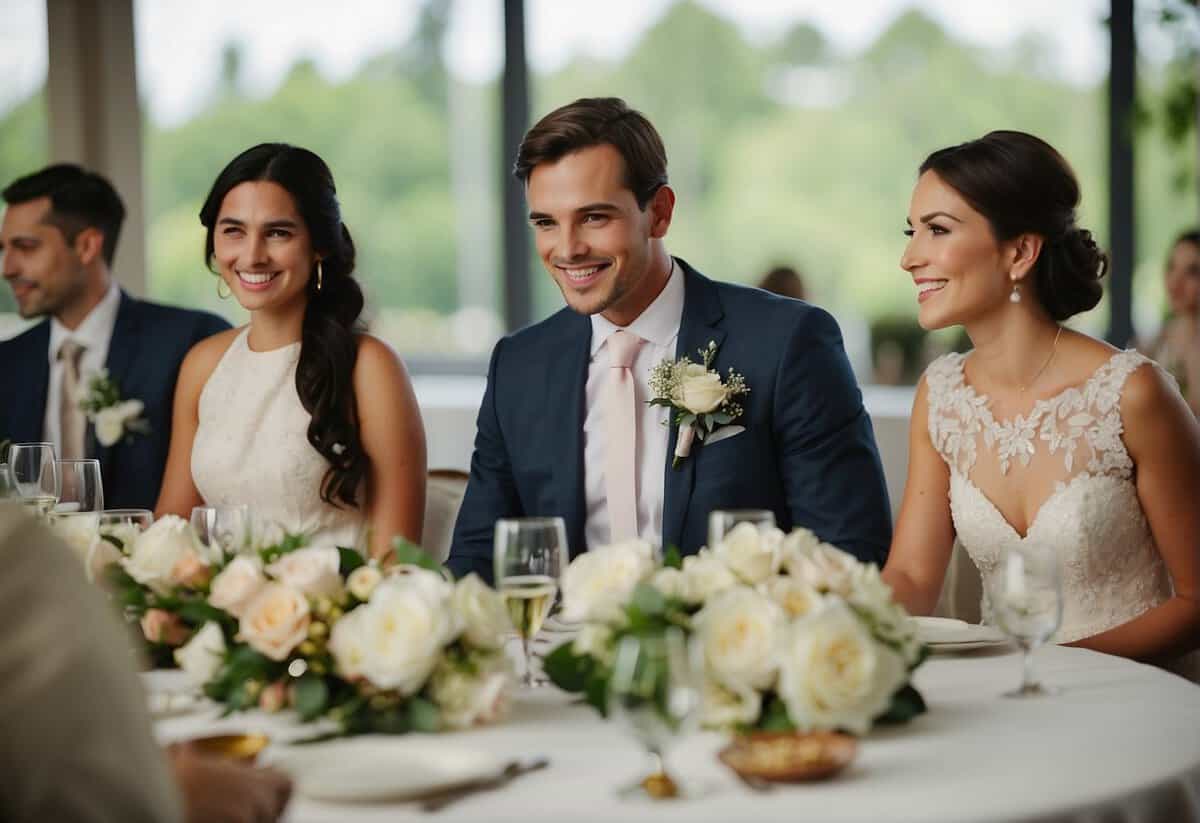
When creating your wedding reception seating chart, special circumstances may require additional consideration to ensure everyone has an enjoyable experience.
Handling Children and Singles
Children: If you’re inviting children to your wedding, consider a dedicated kids’ table equipped with activities to keep them entertained. Placing this table near the parents allows for easy supervision without disrupting other guests. For very young children, having them seated with their parents using appropriate booster seats or high chairs provided by the venue is often the most comfortable option.
Singles: Creating a singles table can encourage mingling and a fun environment. However, take into account the relationships and personalities involved; it’s important to seat singles with people they’re likely to connect with, rather than isolating them due to their single status.
Guests with Specific Needs
Guests in wheelchairs: Ensure your seating plan accommodates guests with mobility issues. Tables should be spaced to allow for wheelchair access, and these guests should be seated at tables close to amenities such as restrooms and exits.
Older guests: Seat older guests where they would be most comfortable, considering both their need for quieter spaces away from loudspeakers, and the proximity to restrooms. It’s also courteous to place them near the exit to reduce the distance they need to walk.
Navigating Divorced Parents
For family tables where divorced parents are involved, diplomatically arrange seating by considering current relationships and any new partners. If relationships are amicable, seating them at the same table could be acceptable. Otherwise, place them at separate tables of equal distance from the main table, to avoid any perception of favoritism. Always prioritize the comfort of all involved, which in turn, will enhance your special day.
Finalizing Your Seating Plan

When finalizing your seating plan, start with the assigned seating for your wedding reception seating. It’s crucial for ensuring that the dinner flows smoothly and everyone feels considered. Your plan begins with good table arrangements.
Begin by deciding who will sit at the head table, which is often the focal point. Traditionally, you and your partner are in the center, with you to your partner’s right. For a detailed guide on setting this up, check out Wedding Seating Chart Etiquette.
Then, use place cards to indicate where each guest should sit. They are typically placed on the table in their respective spots. When guests arrive, an escort card can direct them to their assigned table. For inspiration, here’s guidance on Weddings Seating Charts.
Ushers can help guests find their seats, making the process smoother. Have a clear and easily understandable seating chart near the reception entrance to assist your ushers. For an ultimate guide on creating one, check the Ultimate Guide to Reception Seating.
Finally, it’s essential to have a thought-out floor plan. It plays a significant role in how well your guests can mingle and enjoy the event. For strategies on crafting a perfect floor plan, look at Mastering the Wedding Seating Chart.
Remember, your seating plan should reflect both functionality and your personal touch. Create a setup that feels warm and welcoming for your special day.
Frequently Asked Questions
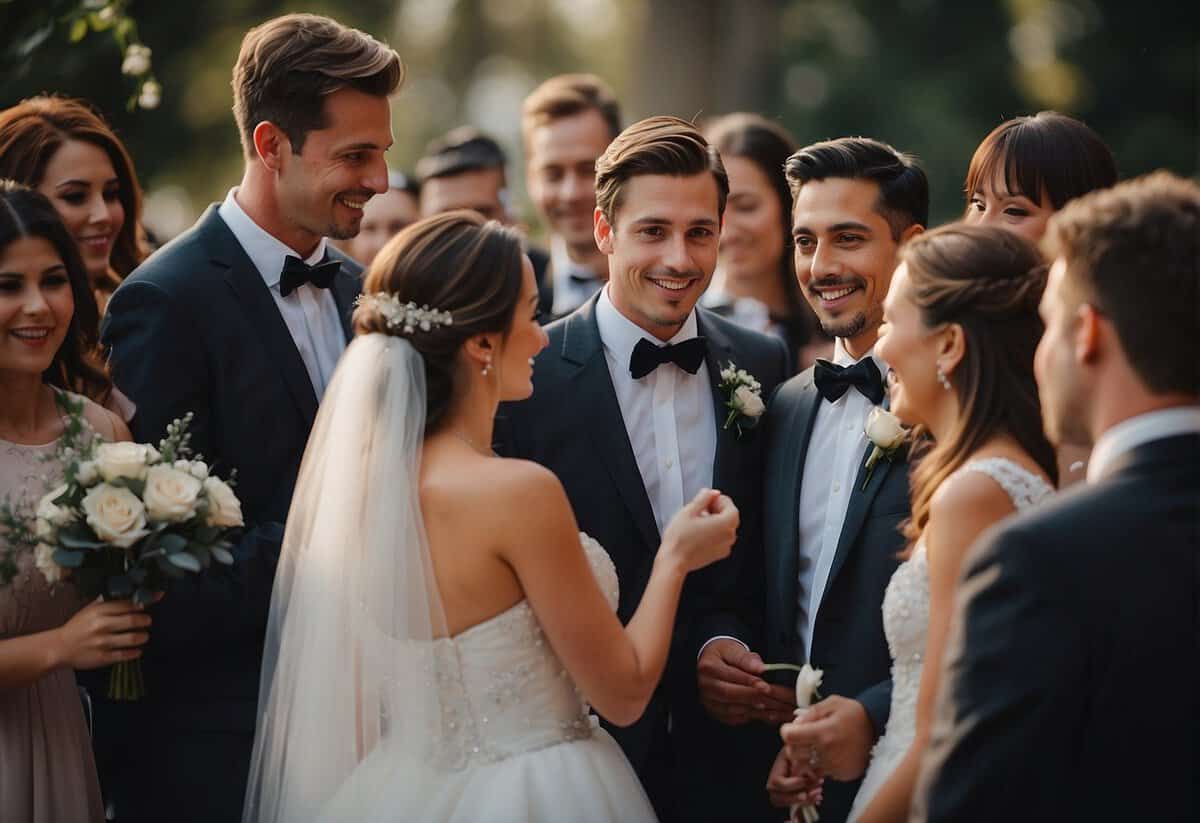
In wedding planning, knowing where everyone should sit can often seem like a puzzle. These FAQs will help you place your guests just right for the ceremony and reception.
Where do parents traditionally sit during a wedding ceremony?
Traditionally, the bride’s parents sit on the left side of the aisle, while the groom’s parents sit on the right. If it’s a Christian ceremony, these sides are reversed.
What is the proper etiquette for arranging a wedding seating chart?
When arranging a wedding seating chart, it’s important to consider family dynamics and relationships between guests. The bride and groom should have their loved ones and most important guests seated closest to them.
How are family members seated at a wedding reception?
At a wedding reception, family members typically sit in proximity to the bride and groom. Immediate family and close relatives are often seated at tables nearest to the newlyweds’ table.
At the reception, do both sets of parents sit together?
It’s not uncommon for both sets of parents to be seated together at the reception, but this may vary depending on family situations and preference. Sometimes they are seated at separate tables of equal distinction.
Can you explain who typically sits at the head table during a wedding?
The head table is typically reserved for the wedding party, including the bride and groom, their parents, the best man, maid of honor, bridesmaids, and groomsmen.
Are significant others usually included at the head table at weddings?
Significant others of the bridal party are often seated at the head table. However, this may depend on space and the couple’s preference; some opt for a sweetheart table for a more intimate setting.

